As I've mentioned in a previous post, I took my boat down to Svendsen's Boat Works in Alameda for some mast and rigging repairs after a disagreement with a drawbridge operator about exactly how open the bridge actually was.
So a little while ago I went down to check on the boat and found her like so:
For a moment I couldn't think of what exactly was amiss. Then I realized that the mainmast had in fact been removed. A little walking around the yard and I found it lying on some sawhorses. This is the first time I'd gotten a close look at the broken end where the masthead used to be welded on:
About a foot below that you can see where the bridge girder hit and scarred the aluminum a bit:
Looking down along the length of the mast, it also looks (to my untrained eye) as though there's a bend in the mast right where the lower spreaders are attached:
Other than that, some of the screws that held the spreaders in place look to have been pulled loose:
I'm still waiting to hear from the insurance company and Svendsen's rigging shop as to whether they can save the mast and make it serviceable again or if it needs to be replaced altogether. We'll see.
Meanwhile, as I mentioned in another post, the boat tried to sink last week. It seems that my trip motoring all along the length of the bay was enough to wear down the flax packing in the shaft log (the seal where the propeller shaft passes through the hull of the boat) and it was leaking by significantly. This shouldn't have been a problem but, for reasons unknown, the bilge pump decided to take a vacation at about the same time. So after a couple of weeks of sitting at the dock without incident, the engine room filled with enough water that it completely submerged the engine. Blast!
After they'd pumped the water out, the good folks at the boatyard sent me a bunch of terrifying pictures of the oily funk that now covered everything in the engine room.
That afternoon I ran down to Alameda and tightened down the packing gland to prevent it happening again.
Last night I shanghaied my friend Matt and we went down to troubleshoot the bilge pump. The problem with troubleshooting the bilge pump on my boat is that it's situated at the deepest darkest part of the bilge, below the prop shaft. The only way to reach it is through this hole:
More precisely, the only way to reach it is to lay face down on the deck, slide into the hole head first, thread your body past the two stainless steel steering cables, lean against the raw fiberglass of the hull, and stretch as far as you can in order to just barely catch the top of the bilge pump housing with your fingernails, then hold onto it as if for dear life while you shimmy and shake and swear and suffer and slowly back your way out of the hole. All the while, the steering cables digging into your left armpit.
Matt didn't get a picture of me halfway in the hole, but he did get this shot of me in between a couple of forays down below:
Once I'd pulled the pump out (losing a hose clamp and a basket strainer into the bilge that I'd have to go back for in the process) I pulled it apart to see what was the matter. For all my poking around, it looked to be in good order. Holding it to the battery terminals, the pump functioned perfectly. Clearly the flaw was elsewhere.
Working my way back up the system, I found the problem. There, just under the deckplates in easy reach and ready view, were a pair of crimp connections that were badly corroded. Once I'd replaced the crimp fittings, everything ran perfectly. So in essence I'd spent two hours risking cuts and scrapes and the structural integrity of my spinal column in the deepest darkest dirtiest part of the boat when all I had to do what cut a couple pairs of wires and reattach them. Shit.
The coolest part though is the pair of bruises I got that match the steering cables I was laying on:
Awesome!
Stay tuned for more...

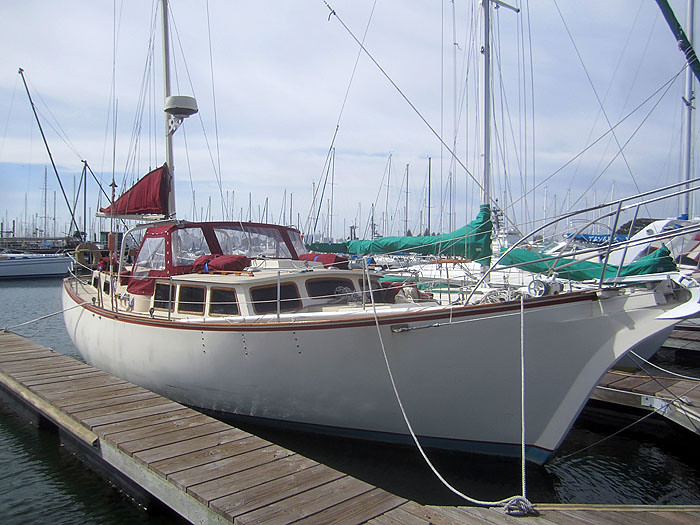


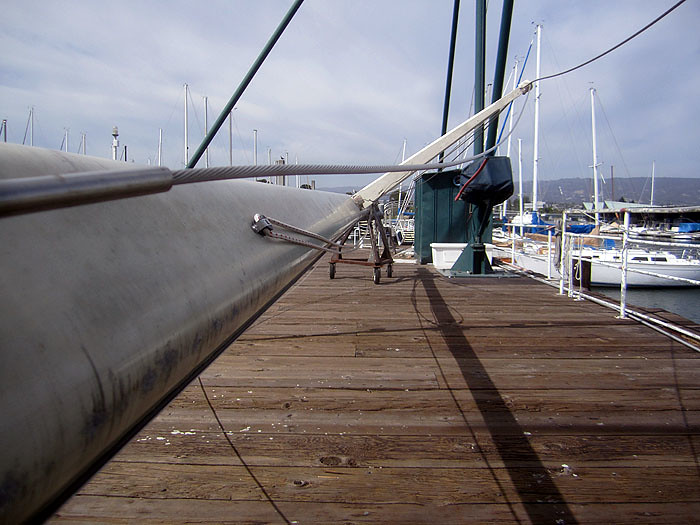
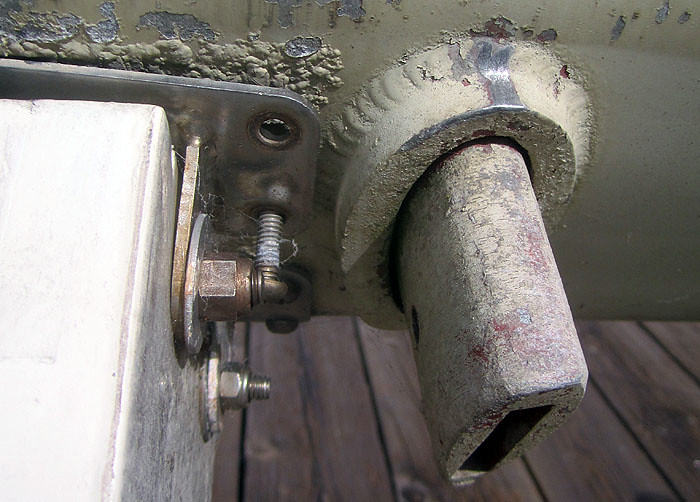
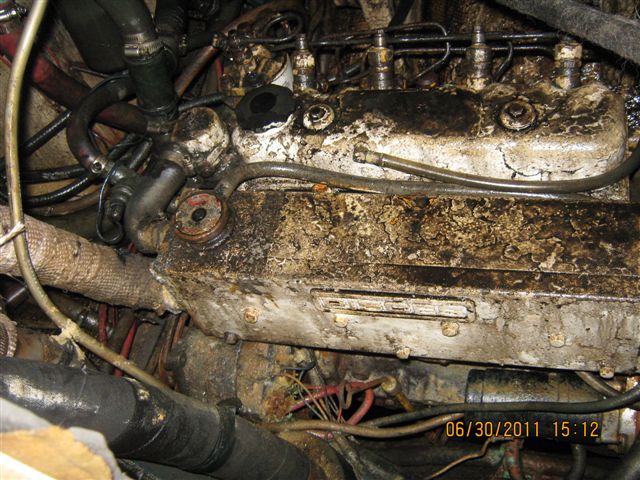
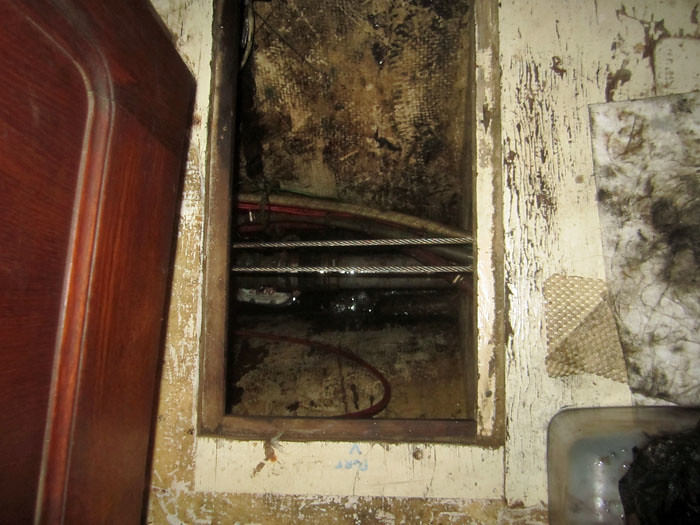
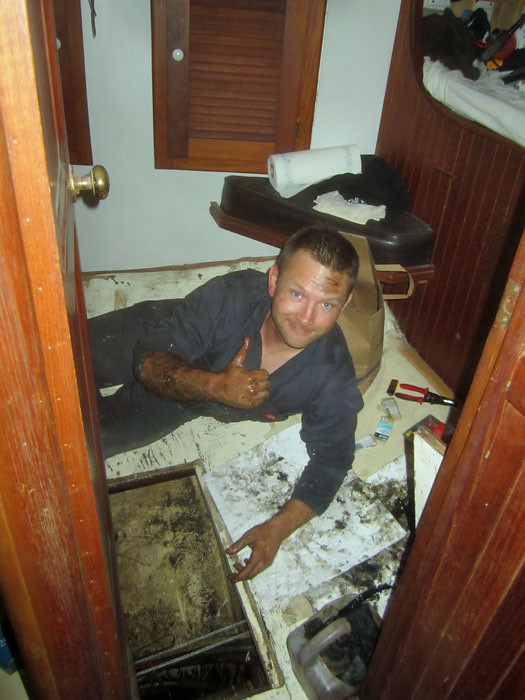
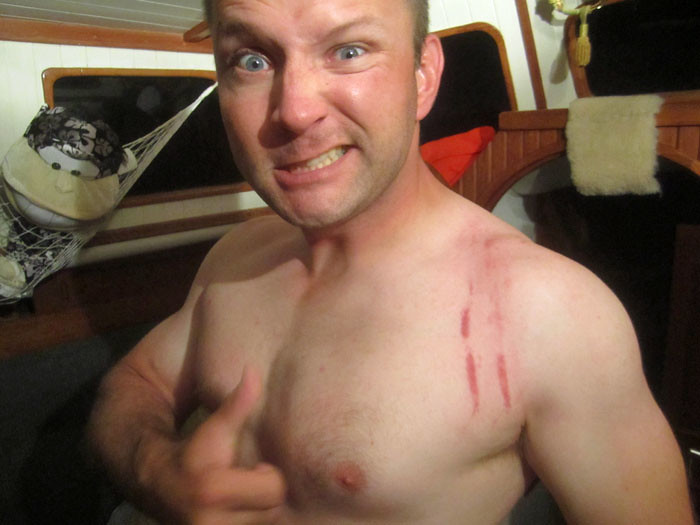
I want a boat....but not one that does that....but only all the other stuff that's really cool that boats do but for less money and less problems and even more fun than you've described here.
ReplyDelete